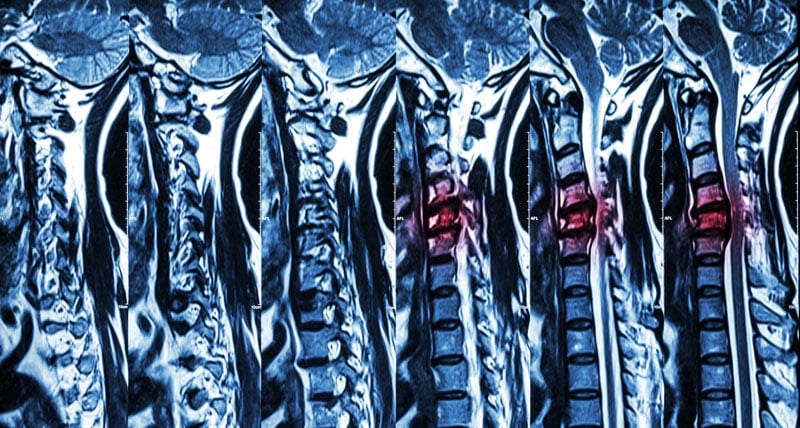Cervical Disc Herniation

What is it?
The cervical disc herniation is one of the most common causes of neck or upper body pain that occurs when the gel like inside of the intervertebral disc (nucleus pulposus) provoke pressure to a cervical nerve.
What causes cervical disc herniation?
With aging, the discs become dehydrated and lose their flexibility as well as their ability to absorb the shock from the movements of our body. The outside layer of the disc (annulus fibrosus) forms cracks which allow the inside of the disc to rupture through and irritate the spinal nerves causing pain. Poor standing, aging, improper lifting or twisting, daily wear and a number of occupational activities can all lead to a herniated disc as well as a neck injury from an accident. The parts of the body that are usually affected are the neck, the shoulder, the arm, the hand and even fingers.
What are the symptoms?
The symptoms may vary depending on the position of the herniated disc and by which nerve is irritated. They can occur spontaneously or gradually and they can last from a few days up to months. Some of the symptoms affiliated with a cervical herniated disc are:
- Numb or sharp pain in the neck
- Burning or tingling sensation on the neck, shoulders or arm
- Stiffness of the neck
- Muscle weakness or spasms in the arm or hand
Diagnostic methods
The diagnosis comes from a detailed medical history and a physical and neurological examination from your doctor. The patterns of the pain and your habits can help your doctor estimate your condition. Further examing usually includes an MRI or CT scan.
Treatment Options
The treatment of a cervical herniated disc may not require surgery. Some more conservative methods like rest, medication, a collar or physical therapy may help to relieve from the symptoms. If the symptoms do not improve with time or in some cases when the spinal cord is affected, endoscopic or minimally invasive surgery techniques can be performed to relief the symptoms.
